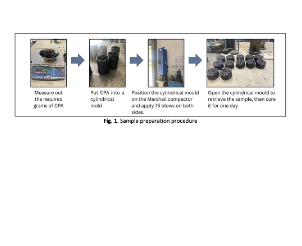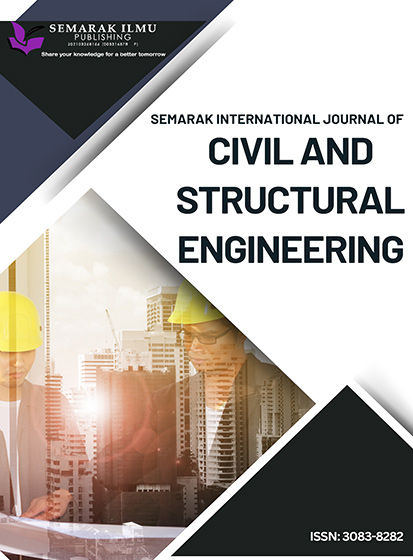Performance Evaluation of Cold Premix Asphalt with Tire Waste Mixed on Road Pothole
Keywords:
Cold Premix Asphalt (CPA), Cold Mix Asphalt (CMA), marshall stability, bulk density, moisture susceptibility, potholeAbstract
Potholes remain a critical cause of vehicle damage, accidents, and high maintenance costs, while waste tires pose environmental challenges due to limited recyclability. This study evaluates the performance of Cold Premix Asphalt (CPA) incorporating fine crumb rubber for pothole repair, with a focus on Bulk density, Void in Mineral Aggregate (VMA), Marshall stability, moisture susceptibility, bonding strength, and deformation resistance. Twelve samples were prepared under three mixture conditions and tested accordingly. Results showed that Bulk density was reduced with crumb addition due to its low density and elastic properties. The neat CPA achieved the highest Marshall stability, while crumb rubber–modified CPA recorded the lowest; however, stability improved when bitumen was added to the crumb mix. Voids in Mineral Aggregate (VMA) increased significantly with crumb rubber, but decreased with bitumen, reflecting improved compaction. Moisture susceptibility decreased in modified mixes yet remained above the 80% threshold. Field observations over three weeks confirmed that all CPA variants maintained adequate bonding and compaction under traffic conditions. Overall, the findings indicate that CPA, particularly when modified with crumb rubber and bitumen, offers a sustainable and effective alternative for pothole repair, supporting both performance and environmental benefits.









